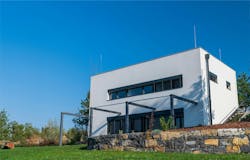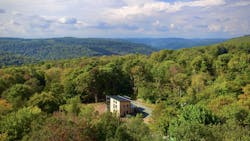The Passive House Network has published a new resource that clarifies the expectations and roles of the certifier in certifying buildings to Passive House building standards. The “Building Certifier Scope of Services” helps outline a range of services a certifier might provide in the process of certifying a building to Passive House standards.
For builders, developers, and homeowners considering the pursuit of certification, the document provides an indispensable resource that was previously absent in the North American market. Now that this resource is available, those pursuing certification will be better-enabled to reach out to a Certifier earlier in the process, leading to improved results.
Certifying Passive House Projects
“One of the most useful steps one can take in planning for a certified Passive House project is to build a team that can navigate the process and be ahead of necessary steps and requirements,” said Lindsey Schack, architect, educator, and co-founder of Love | Schack Architecture. “This document helps illustrate the roles and responsibilities of that team, underscoring how critical it is to have a certifier that can help make recommendations along the way.”
The document is not a one-size-fits-all outline of service. Rather, it is a starting point that can be used to discuss and set expectations. Because no two Passive House projects are exactly the same—the needs of a single family home versus a complex commercial building are vastly different, for example—the resource includes an editable template that supports additions, eliminations, or alternate services.
“Getting Passive House building procurement right is critical to ensuring a smooth, cost-effective, and successful certification process,” said Andrew Peel, founder and managing principal of Peel Passive House Consulting. Peel is also a member of the North American Certifiers Circle (NACC), a group of organizations actively certifying buildings to the international Passive House standards operating in North America. “This document provides a list of the essential certification services that clients should integrate into their requests for proposals.”
The “Building Certifier Scope of Services” was made possible with the help of the Passivhaus Trust, who shared their work for adaptation to the North American market. Contributions were also made by the members of the NACC and the Passive House Institute.
What is a Passive House?
Paving the way for increased durability, optimal comfort, superior indoor air quality and reduced allergens for residents, is the Passive House. Triple-glazed windows ensure a well-insulated home, and a continuous air barrier allows for a significant reduction in annual energy requirements.
There are five main passive house principles: airtight construction, high-performance windows, well-insulated envelopes, thermal bridge-free design, and heat recovery ventilation.
Buildings designed with Passive House principles are extremely comfortable, airtight, and controlled. The air transfer maintains energy coming in and out of the building, and continuous insulation around the entire structure makes for a truly optimized envelope. The goal is to essentially “wrap the building in a blanket,” says Buck Moorhead, AIA, CPHD and principal of Buck Moorhead Architect/ACME Passive.
RELATED
- Utopia’s Passive House Resource Guide
- Carbon-Neutral Community of Passive Homes Coming to New York
- How to Make Any Home a Passive House
For more information on the Scope of Services, visit www.passivehousenetwork.org or email [email protected].

